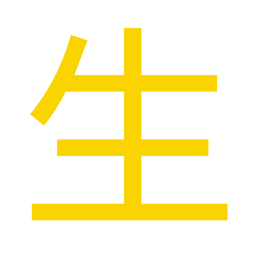At Ikigai Labs, we're on a relentless quest for innovation, always seeking new ways to push the boundaries of what's possible in the digital realm. With the current rise of NFTs and decentralized finance, we see an unexplored avenue for expansion and growth that combines the security and integrity of Bitcoin with the malleability of the Stacks sidechain.

For the uninitiated, Stacks is a layer-1 blockchain solution that extends the functionality of Bitcoin without altering its core protocol. It brings smart contracts and decentralized apps (DApps) to Bitcoin, enabling more complex transactions and use cases on the world's most secure blockchain network.
What if we leveraged Stacks to mint Ordinal NFTs on Bitcoin? Picture this: using Stacks, we design and deploy smart contracts that allow for the creation and management of NFTs. This provides artists and creators with the power to tokenize their works, ensuring their digital assets' authenticity and ownership on the most secure blockchain in existence - Bitcoin.
This process would not only open up the NFT landscape to a more secure and robust network but also bridge the gap between the largest cryptocurrency and the thriving world of digital art and collectibles.
The fusion of Stacks' smart contract capabilities with Bitcoin's unparalleled security can bring forth an ecosystem that allows for the minting and exchange of NFTs, all while maintaining the essential tenets of decentralization and security.
In essence, we could be on the cusp of a radical transformation, one that could elevate the concept of digital ownership to unprecedented heights. Here at Ikigai Labs, we're excited about the possibilities this approach could unlock, and we're ready to lead the charge in making this innovative idea a reality.
"Storing Fine Art on Bitcoin: A New Horizon in Digital Preservation"
In the world of digital art, authenticity and ownership are the pillars of value. Yet, these concepts become tricky in the digital space where replication is often just a click away. Enter Bitcoin, the world’s first and most secure cryptocurrency. Why would we use Bitcoin to store fine art, you might ask? Let's delve into that.
1. Immutable Ledger:
One of Bitcoin’s most significant features is its immutable ledger, the blockchain. Once data is written onto the blockchain, it cannot be changed. This makes it an excellent tool for preserving the authenticity of a piece of art. When a digital art piece is tokenized as a non-fungible token (NFT) and stored on the Bitcoin blockchain, it carries a unique identifier that ties it to its creator. This identifier cannot be replicated or altered, making counterfeiting impossible.
2. Decentralized Security:
Bitcoin operates on a decentralized network that’s spread across thousands of nodes globally. This eliminates a single point of failure, adding an extra layer of security. Bitcoin's blockchain is considered the most secure due to the massive computational power that secures it, making it an excellent choice for storing valuable digital assets like fine art.
3. Longevity:
Bitcoin has demonstrated a decade-plus lifespan with high network uptime. It's the oldest and most recognized cryptocurrency, often referred to as "digital gold". Its proven durability ensures that digital artwork minted on its blockchain will be preserved for a very long time.
4. Widely Recognized:
Bitcoin's wide recognition and acceptance could potentially help digital art reach a broader audience. Artists looking to break into the global scene might find this appealing, especially when paired with the security and immutability that Bitcoin offers.
5. Value Store:
Bitcoin, as a value store, adds an additional aspect of worth to the art stored on it. Just as a piece of art's value might rise due to its association with a prestigious gallery, digital art tied to Bitcoin could potentially carry a higher perceived value.
By using Bitcoin and a smart contract platform like Stacks, we can create a new ecosystem for fine art, one where artists have control, buyers have authenticity guarantees, and the art itself is preserved on a secure, immutable platform. This is why storing fine art on Bitcoin doesn’t just make sense—it represents the future of art ownership and preservation.

"Bitcoin and Luxury Brands: Harnessing Exclusivity and Scarcity"
In the world of luxury brands, exclusivity and scarcity are the key factors that drive value and desirability. Much like a limited edition luxury handbag or a rare vintage timepiece, there's a limited supply of Bitcoin, making the "blockspace" or the space available for transactions in the Bitcoin blockchain, extremely scarce and valuable.
This brings us to why luxury brands could consider leveraging Bitcoin blockchain:
1. The Exclusivity Factor:
Luxury brands thrive on exclusivity. It's what sets them apart from mass-market brands. Bitcoin's limited blockspace brings a similar dimension of exclusivity to digital assets stored on its blockchain. Just as there's a prestige associated with owning a piece from a limited run by a luxury brand, there's a uniqueness associated with owning a digital asset stored on the Bitcoin blockchain, where the blockspace is a scarce resource.
2. Blockchain Certifications:
Luxury brands could use the Bitcoin blockchain to issue blockchain-based certificates of authenticity for their products. These digital certificates, once issued, cannot be tampered with or replicated, providing an immutable proof of authenticity and ownership that's tied to the brand itself.
3. Immutable Provenance:
For luxury brands, the story of a product—where it comes from, how it's made, who's made it—is as important as the product itself. The Bitcoin blockchain could be used to record this story, providing an unchangeable record of provenance that adds to the product's appeal and value.
4. Symbol of Status:
Just as owning a luxury brand is often a symbol of status, so is owning Bitcoin. It's digital gold, an asset class of its own. Tying luxury brands to Bitcoin could enhance the brand's image, making it more appealing to the affluent demographic that's increasingly investing in digital assets.
5. New Revenue Streams:
Luxury brands could also explore creating digital representations of their physical products as non-fungible tokens (NFTs) on the Bitcoin blockchain. This could open up new revenue streams and help brands reach new audiences.
In conclusion, the exclusivity and scarcity associated with Bitcoin's blockspace makes it an ideal platform for luxury brands to not only authenticate and add value to their products but also to enhance their brand image and explore new opportunities in the digital space.
"Bitcoin Ordinals: A Boom in Decentralized Ownership"
Bitcoin Ordinals, akin to NFTs but minted on the Bitcoin network, have been making waves in the cryptocurrency space. We're witnessing an upward trend in trading volumes and floor prices, with Crypto Twitter buzzing about Bitcoin Ordinals.

Are you considering joining the Bitcoin Ordinals trend but don't know where to start? Here's a straightforward five-step guide for you:
1. Set Up a Xverse Wallet:
Your journey begins with establishing a digital wallet. I've experimented with numerous wallets, and the Xverse extension for Chrome stands out as the superior choice. It bears a resemblance to MetaMask, making it an easy transition for those familiar with the Ethereum platform.
2. Discover Marketplaces:
Armed with a wallet and some Bitcoin, you're ready to delve into the world of Bitcoin Ordinals. Be aware, though, that navigating through most Ordinals marketplaces can be challenging due to less-than-user-friendly interfaces.
Here, Magic Eden shines as an exception. Its Bitcoin marketplace bears a striking similarity to its Ethereum counterpart. From floor prices to volume indicators, you can evaluate the popularity and demand of various Ordinals collections.
Magic Eden also displays a ranking of top projects, a feature often absent in other marketplaces. If you're relatively new to the Ordinals ecosystem, it's advisable to start with these top collections.
3. Making a Purchase:
The process of buying a Bitcoin Ordinal is much like purchasing an Ethereum NFT. Select a collection, choose an Ordinal within it, and hit "buy now". Confirm the transaction in your Xverse wallet, and voila!
However, remember:
Bitcoin transactions usually take longer than Ethereum ones. So, don't worry if your newly bought Ordinal doesn't show up immediately in your wallet.
Owing to this delay, many items on Magic Eden often stay in a pending status.
4. Learn by Doing:
The best way to learn is by doing. Don't rush to invest a huge amount in your first Ordinal. Start small, adhere to this guide, and go for a low floor price Ordinal first.
5. The Power of Bitcoin Ordinals:
Lastly, it's worth noting the power of the Bitcoin network and the concept of decentralized ownership that Bitcoin Ordinals represent. With over 16,000 nodes securing the Bitcoin network, each Satoshi you own is a testament to this decentralized ownership.

PS/ Or EVM as the compute layer & Bitcoin as the storage layer?







